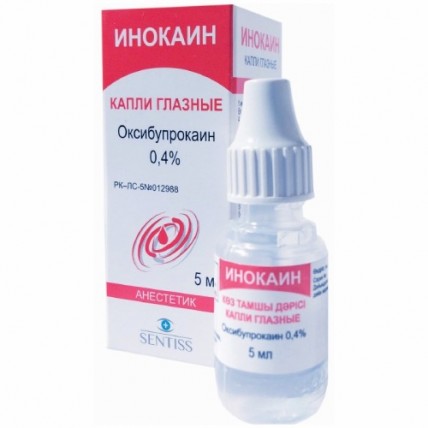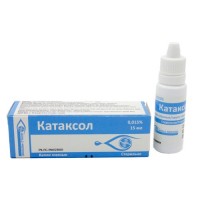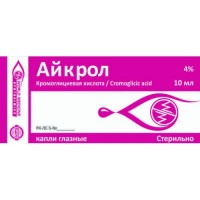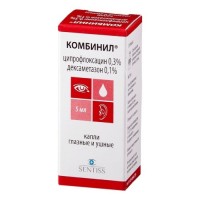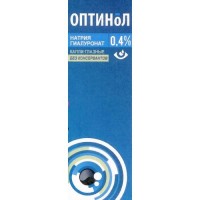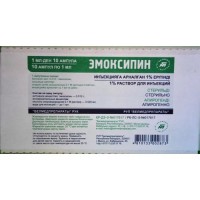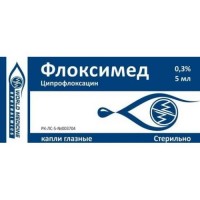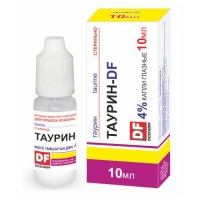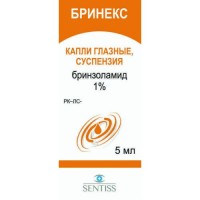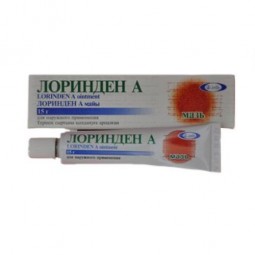INOCAINE® (Oxybuprocaine) Eye Drops 0.4%, 5 ml
- $12.60
Common/Other brand names: Altafluor, Benoxil (Santen), Cebesine (Chauvin Bausch & Lomb), Conjuncain, Dorsacaine, Fluress, Lacrimin (Santen), Novesin (Novartis), Novesine (Novartis), Prescaina (Llorens).
What is INOCAINE® (Oxybuprocaine) Eye Drops?
INOCAINE® (Oxybuprocaine) Eye Drops is a local anesthetic used in ophthalmology.
Its active ingredient, Oxybuprocaine hydrochloride, provides temporary numbing of the eye’s surface, making it easier to perform diagnostic and minor surgical procedures without causing discomfort.
The drops are particularly useful for procedures such as measuring intraocular pressure (tonometry), gonioscopy, and the removal of foreign bodies or stitches from the cornea or conjunctiva.
The numbing effect occurs within 30 seconds and lasts for about 15 minutes, ensuring a smooth and painless process for short ophthalmic interventions.
When are INOCAINE® Eye Drops Used?
INOCAINE® is used for local anesthesia during several ophthalmic procedures, including:
- Measuring intraocular pressure (tonometry)
- Gonioscopy (a procedure to examine the eye’s drainage system)
- Taking a conjunctival scraping for diagnosis
- Removing foreign bodies or stitches from the cornea or conjunctiva
- Performing short surgical procedures on the eye
What Precautions Should Be Taken Before Using INOCAINE®?
Before using INOCAINE® eye drops, it is important to be aware of the following precautions:
- The medication is not recommended for use in children under 8 years old.
- It should only be administered by a healthcare professional and is not intended for long-term home use, as frequent use can cause corneal damage.
- The drops should be applied only to the conjunctival sac of the eye.
- Patients with severe heart conditions, myasthenia gravis, or those prone to allergic reactions should use the drops with caution.
Can INOCAINE® Interact with Other Medications?
Yes, Oxybuprocaine may enhance the effects of certain medications like succinylcholine and sympathomimetics, while potentially reducing the effectiveness of antibacterial drugs like sulfonamides.
It should not be used in combination with silver nitrate, mercury salts, or alkaline solutions.
How Should INOCAINE® Eye Drops Be Stored?
To maintain the effectiveness of the drops:
- Store them in a place away from direct light at a temperature not exceeding 25°C (77°F).
- Avoid freezing the product.
- Keep out of the reach of children.
- Once the bottle is opened, it should be used within one month.
Are There Any Side Effects from Using INOCAINE®?
Side effects are rare but can occur.
They include:
- Temporary irritation, such as stinging or blurred vision
- Allergic reactions, which can, in rare cases, lead to anaphylactic shock
- Overuse or improper use can lead to corneal damage, including keratopathy or corneal perforation.
If any severe reactions occur, it is important to consult a healthcare professional immediately.
How to Use INOCAINE® Eye Drops?
For adults and children over 8 years old, the typical dose is one drop in the conjunctival sac.
This provides surface anesthesia within 30 seconds, lasting up to 15 minutes.
For longer procedures, additional drops may be administered at intervals of 4-5 minutes.
If multiple ophthalmic drugs are used, there should be at least a 5-minute gap between different eye drops.
Can INOCAINE® Be Used During Pregnancy or Breastfeeding?
The use of Oxybuprocaine during pregnancy and breastfeeding is not recommended unless absolutely necessary.
It should only be used if the potential benefits outweigh the risks to the fetus or baby, as advised by a healthcare provider.

